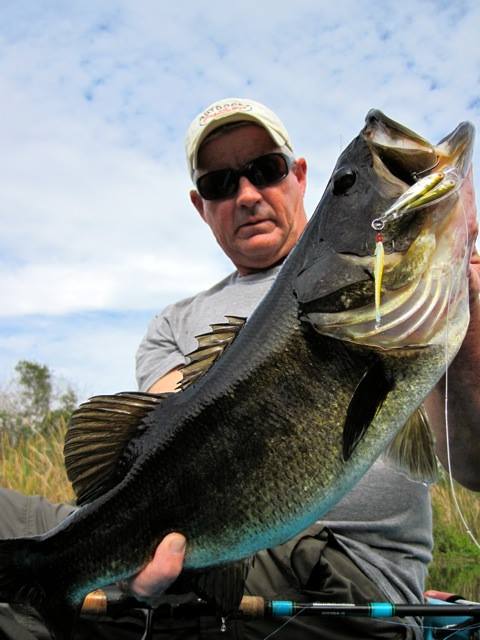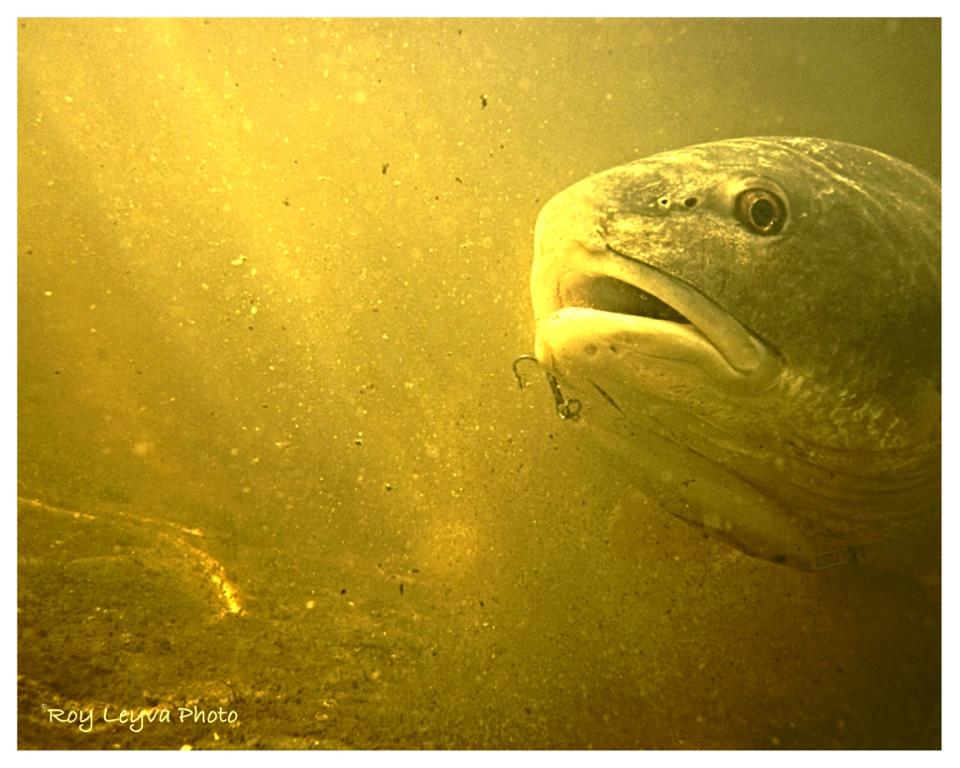Gus Montoya’s girlfriend, Yissel got her personal best in this 24″ Trout out of the Indian Lagoon system on the Unfair Lures, Rip N Slash! Congrats, that is seriously one of the prettiest trout we’ve seen in awhile!

Fishing the Indian River Lagoon: Catching Speckled Sea Trout with Artificial Bait
As any good Florida angler will tell you, the Indian River Lagoon is a mighty fine place to cast a line, especially if you’re looking to hook into some speckled sea trout. These waters stretch along Florida’s east coast, making up one of the most biodiverse estuaries in North America, and it’s right here where the speckled sea trout thrive. Whether you’re a seasoned fisherman or new to the game, fishing the lagoon with artificial baits can be both challenging and rewarding – if you know how to do it right.
Getting to Know the Lagoon and Its Trout
The Indian River Lagoon runs about 156 miles, from Ponce de Leon Inlet down to Jupiter Inlet, and it’s full of shallow flats, grassy beds, and hidden channels. The beauty of fishing here, especially for speckled sea trout (or “spotted seatrout” as some folks call them), is that the habitat supports a robust trout population year-round. These fish love the seagrass beds and mangrove shorelines, where they hunt for smaller baitfish and crustaceans.
Why Artificial Bait Works
If you’re like many anglers around here, you might think live bait is always the way to go. But, in the Indian River Lagoon, artificial baits can be just as effective, if not more so. Using artificial baits has its perks: for one, you don’t have to worry about keeping your bait alive. Plus, with the right technique, artificial lures can mimic the natural prey of the sea trout better than you’d think.
Speckled trout have great eyesight, so lures with flash and movement are particularly appealing. Plus, fishing with artificial bait allows you to cover more water quickly, which is especially useful in the vast stretches of the lagoon.
Choosing the Right Lures
For targeting sea trout in the Indian River Lagoon, here are some tried-and-true artificial baits:
- Soft Plastics on a Jig Head: A soft plastic lure that mimics a small baitfish or shrimp can be deadly effective. Go with natural colors, like mullet or shrimp patterns, for clearer water. If the water is murkier, a bit of color contrast, like white or chartreuse, can make all the difference.
- Topwater Lures: There’s nothing quite like the thrill of a speckled trout smashing a topwater plug. Early mornings or late afternoons, when the water is calm, are prime times to break out these lures. The “walk-the-dog” technique is popular here; it creates a zig-zag motion that sea trout can’t resist.
- Suspending Twitch Baits: These are great for targeting trout hanging out in slightly deeper water. Cast out, let it sink a bit, and start a slow retrieve with occasional twitches. The movement is subtle but mimics a wounded baitfish – an easy meal that no trout can pass up.
Best Time to Fish for Speckled Sea Trout
Timing your fishing can make a world of difference. Speckled trout are most active during dawn and dusk, and they’re especially aggressive in cooler months when the water temperature drops. In winter, they’ll often huddle up in deeper channels, but once spring rolls around, they spread back into the shallows and grassy flats.
Since the Indian River Lagoon is influenced by tides, check your tide charts before heading out. Trout bite best on a moving tide. In most cases, a rising or falling tide will trigger feeding activity as small baitfish and shrimp are swept over the grass beds and into the mouths of waiting trout.
Essential Techniques for Fishing with Artificial Bait
In the Indian River Lagoon, the key to success with artificial baits lies in the presentation. Here are some tips to get the most out of your lures:
- Keep It Natural: Speckled trout are sharp-sighted and can get spooked by a lure that doesn’t look right. Cast softly, especially in shallow waters, and make sure your retrieve mimics the natural movements of baitfish.
- Vary the Retrieve: Experiment with the speed and motion of your lure. Sometimes, a fast, aggressive retrieve will provoke a reaction strike, while other times, a slow, steady motion works best. Try working your soft plastics close to the bottom with a jigging motion, which mimics shrimp or small fish darting along the seagrass.
- Watch for Swirls and Blows: Speckled trout give themselves away with swirls or sudden “blows” on the surface. If you see one, cast just past the spot and work your lure towards it. Trout often hit when the lure is moving away, simulating a fleeing baitfish.
Conservation and Respect for the Lagoon
With all the fishing pressure on the Indian River Lagoon, we anglers need to remember that the health of this fishery is crucial. Overfishing, pollution, and habitat loss have taken a toll, so be mindful of the rules, like catch limits, and consider practicing catch and release to help preserve the fish stocks for future generations.
According to the Florida Fish and Wildlife Conservation Commission, the limit for speckled trout in the lagoon region is five fish per day, with a size range between 15 and 20 inches, although one over 24 inches is allowed. Stick to these rules to do your part in keeping this fishery alive and thriving.
Final Thoughts
Fishing for speckled sea trout in the Indian River Lagoon with artificial bait is a special experience, whether you’re a seasoned pro or a beginner. The lagoon’s unique ecosystem, combined with the thrill of hooking a speckled trout on a well-presented lure, is what keeps folks coming back. Remember, the key to success is in understanding the lagoon, choosing the right lures, and respecting the delicate environment.
With a little luck and the right approach, you’ll soon find yourself hauling in some of Florida’s prized trout. Happy fishing, and tight lines!



